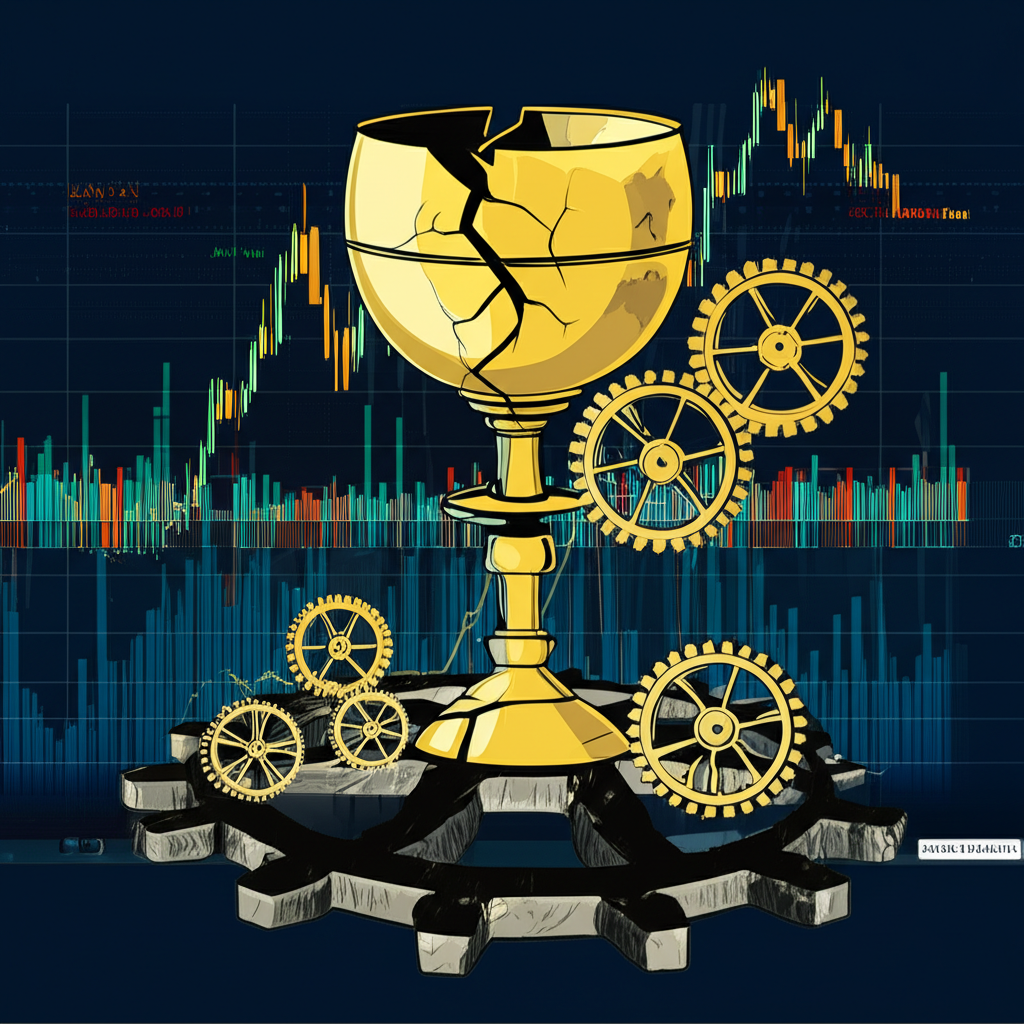Introduction: Decoding the “Best” in Forex Trading Strategies

Navigating the world of foreign exchange can feel overwhelming, especially when every trader seems to be chasing the same elusive prize: the ultimate forex trading strategy. But the truth is, there’s no universal “best” method that guarantees success for everyone. Instead, the most effective approach is one that combines market understanding, disciplined execution, and personal alignment. Whether you’re just starting out or refining your current system, this guide will walk you through the essential elements of building a resilient trading framework—one that adapts to market shifts and fits your unique temperament. We’ll explore core strategies, uncover hidden pitfalls, and reveal how to move beyond chasing quick wins toward achieving consistent, long-term profitability.
Understanding the Forex Market: Your Foundation for Strategy

Before diving into specific trading techniques, it’s vital to understand the environment in which they operate. The forex market isn’t just another financial arena—it’s a decentralized, global network where currencies are traded around the clock, shaped by powerful economic forces and human psychology alike. A solid grasp of its structure and behavior is not optional; it’s the foundation upon which every successful strategy must be built.
Why Trade Forex? Key Market Characteristics
The foreign exchange market stands apart due to its scale, accessibility, and responsiveness. These qualities attract traders from all walks of life, each seeking different opportunities within the same vast ecosystem.
- Unmatched Liquidity: With an average daily turnover of $7.5 trillion as reported by the Bank for International Settlements (BIS) Triennial Survey in April 2022, the forex market dwarfs other financial markets. This depth ensures that orders are filled quickly and with minimal slippage—critical for strategies that rely on precise timing and tight spreads.
- Continuous Access: Unlike stock exchanges bound by fixed hours, the forex market operates 24 hours a day, five days a week, transitioning seamlessly across major financial centers—from Sydney and Tokyo to London and New York. This allows traders to engage at times that suit their personal schedules, making it accessible to part-time participants and full-time professionals alike.
- Leverage and Capital Efficiency: Brokers offer leverage that enables traders to control large positions with relatively small amounts of capital. While this can amplify gains, it also increases exposure to losses. A 100:1 leverage ratio means a 1% move against your position could wipe out your entire investment. That’s why risk control isn’t just a recommendation—it’s a survival necessity.
Dispelling Myths: The “Holy Grail” Strategy Does Not Exist

One of the most damaging myths in trading is the idea of a “holy grail” strategy—a perfect system that wins every trade with zero risk. This fantasy is aggressively marketed by some signal providers and course sellers, but it has no basis in reality. Markets evolve. Economic policies shift. Investor sentiment changes. What worked flawlessly in a trending market may fail completely during a period of consolidation.
The real strength of a trading strategy lies not in its complexity or win rate, but in its adaptability and consistency. The best approach is not a rigid formula, but a flexible framework that includes:
- Clear rules for entries and exits
- Robust risk management protocols
- Alignment with your personality and lifestyle
- The ability to adjust based on performance and market feedback
Successful traders don’t search for perfection—they build resilience. They accept losses as part of the process and focus on long-term edge, not short-term certainty.
Core Forex Trading Strategies: Mechanics, Pros & Cons

Trading strategies in forex are primarily defined by time horizon and frequency. Each style demands different skills, time commitments, and emotional fortitude. Understanding these distinctions helps you choose an approach that aligns with your goals and daily routine.
| Strategy | Time Horizon | Trade Frequency | Key Focus | Pros | Cons |
|---|---|---|---|---|---|
| Scalping | Seconds to Minutes | Very High | Small price imbalances | Frequent small profits, reduced overnight risk | High stress, intense focus, high commission/spread impact |
| Day Trading | Minutes to Hours (within one day) | High | Intra-day price movements | No overnight risk, clear daily closing, consistent daily opportunities | Significant time commitment, stress, requires quick decision-making |
| Swing Trading | Days to Weeks | Medium | Medium-term market swings/trends | Less time-consuming, larger profit targets per trade, less stress than short-term | Overnight/weekend risk, requires patience, larger stop-losses |
| Position Trading | Weeks to Months/Years | Low | Long-term market trends (macro) | Minimal time commitment, large profit potential, ignores minor fluctuations | Requires significant patience, large capital, substantial overnight risk, subject to fundamental shifts |
Scalping: High Frequency, Small Gains
Scalping is the most intense trading style, where profits are measured in pips and trades last seconds. Scalpers exploit tiny inefficiencies in price, often entering and exiting dozens—or even hundreds—of times per day. This approach thrives in highly liquid pairs like EUR/USD during peak overlap hours between London and New York.
Success in scalping depends on speed, precision, and discipline. Traders typically use 1-minute or tick charts and rely on level 2 data or depth-of-market tools to anticipate order flow. A fast broker with low latency execution is essential. Even minor delays can erase the profit margin. While the potential for frequent gains exists, so does the risk of rapid drawdowns due to slippage, spread widening, or emotional fatigue.
Day Trading: Intra-Day Opportunities
Day traders aim to capture price movements within a single session, closing all positions before the market closes. This eliminates overnight risk, which can be significant due to gaps caused by weekend news or global events.
Traders often use 5-minute to 1-hour charts and combine technical indicators like moving averages, RSI, and MACD with price action patterns. For example, a common setup might involve waiting for a pullback to a 20-period moving average during a strong trend, then entering with momentum confirmation from the MACD histogram.
The challenge lies in maintaining focus throughout the trading day. It requires sharp analytical skills, quick decision-making, and emotional resilience. Many day traders find it helpful to define a clear routine, including pre-market analysis, scheduled breaks, and a post-session review.
Swing Trading: Capturing Medium-Term Trends
Swing trading strikes a balance between short-term intensity and long-term patience. Positions are held for several days to a few weeks, aiming to capture distinct phases of a trend—such as a breakout after consolidation or a retracement within a larger uptrend.
This style uses higher timeframes like the 4-hour and daily charts, allowing traders to filter out market noise. Tools like Fibonacci retracements, support and resistance zones, and trend lines are central to identifying high-probability setups. For instance, a trader might look for a confluence of a 61.8% Fibonacci level, a previous resistance turned support, and bullish candlestick patterns before entering a long trade.
The main advantage is reduced time pressure. Unlike day trading, swing traders don’t need to monitor screens constantly. However, they must be comfortable holding positions through short-term volatility and weekend gaps. Overnight financing costs (swaps) can also accumulate, especially on large or leveraged positions.
Position Trading: Long-Term Market Moves
Position trading is the most strategic and patient approach, focused on macroeconomic trends that unfold over months or years. Traders in this category act more like investors, using fundamental analysis to assess the long-term strength or weakness of a currency.
For example, a position trader might go long on the Japanese yen if they anticipate a shift in the Bank of Japan’s ultra-loose monetary policy, supported by rising inflation and wage growth. Technical analysis is used not for timing entries but for confirming the broader trend on weekly and monthly charts.
Because positions are held for extended periods, psychological endurance is key. Drawdowns can be deep and prolonged, requiring strong conviction and a well-capitalized account. This style suits individuals who prefer a hands-off approach and are comfortable with low trade frequency.
Essential Components of Any Winning Forex Strategy
A profitable trading strategy is more than a set of entry and exit rules—it’s a complete system that manages risk, leverages analysis, and aligns with your psychological profile. Without these core components, even the most technically sound method can fail.
Robust Risk Management and Money Management
This is the cornerstone of sustainable trading. No matter how accurate your analysis, losses are inevitable. The difference between success and failure lies in how you handle them.
- Stop-Loss Orders: These automatically close a losing trade at a predetermined level, preventing emotional decisions during market stress. Placing a stop too tight risks being stopped out by normal volatility; too wide risks oversized losses.
- Take-Profit Levels: Locking in gains ensures you don’t give back profits due to indecision or greed. A well-placed take-profit aligns with technical targets like resistance levels or measured moves.
- Position Sizing: This determines how much capital to risk per trade. A widely accepted rule is to risk no more than 1–2% of your account on any single trade. For a $10,000 account, that means a maximum risk of $100–$200 per trade.
- Risk-Reward Ratio: Always assess whether the potential reward justifies the risk. A 1:2 or 1:3 ratio means you aim to make at least twice (or three times) what you’re risking. Over time, even with a 50% win rate, this ratio can generate net profits. Investopedia highlights the importance of risk management in preserving capital and ensuring sustainable trading.
Technical Analysis Tools & Indicators
Technical analysis helps traders interpret price action by identifying patterns and trends. While no indicator predicts the future, they provide objective criteria for decision-making.
- Moving Averages (MAs): These smooth price data to reveal trends. The crossover of a short-term MA (like the 9-period) above a long-term MA (like the 21-period) can signal a bullish shift.
- Relative Strength Index (RSI): This momentum oscillator ranges from 0 to 100. Readings above 70 suggest overbought conditions, while below 30 indicate oversold levels—potential reversal zones, especially when confirmed by price action.
- Moving Average Convergence Divergence (MACD): By comparing two moving averages, the MACD reveals momentum shifts. A bullish signal occurs when the MACD line crosses above the signal line, particularly when both are below zero (indicating a potential trend reversal from bearish to bullish).
- Bollinger Bands: These consist of a middle MA and two standard deviation bands. Prices near the upper band may be overextended, while those near the lower band could signal undervaluation. A “squeeze” (narrowing bands) often precedes high-volatility breakouts.
- Chart Patterns: Structures like head and shoulders, double tops, triangles, and flags help traders anticipate continuation or reversal scenarios. For example, a breakout from a symmetrical triangle on high volume can indicate the start of a new trend.
The Role of Fundamental Analysis
While technical analysis focuses on price, fundamental analysis looks at the underlying economic drivers of currency value. For short-term traders, fundamentals often serve as context—explaining why a breakout occurred after an interest rate decision. For longer-term traders, they are the primary driver.
- Economic Data Releases: Key reports like Non-Farm Payrolls (NFP), Consumer Price Index (CPI), GDP, and retail sales can move markets dramatically. A stronger-than-expected jobs report, for example, may boost expectations of rate hikes, strengthening the currency.
- Central Bank Policies: The Federal Reserve, European Central Bank, and other institutions influence currency strength through interest rates and quantitative easing. Hawkish statements (pro-rate hikes) typically support a currency, while dovish tones weaken it.
- Geopolitical Risk: Wars, elections, trade wars, and political instability can trigger capital flight to safe-haven currencies like the US dollar, Japanese yen, or Swiss franc. These events are unpredictable but can create powerful, sustained trends.
Smart traders don’t rely solely on one type of analysis. Instead, they use technicals to time entries and fundamentals to validate direction. This confluence increases the probability of success.
Choosing Your Best Forex Trade Strategy: A Personalized Approach
There is no one-size-fits-all solution in trading. The most effective strategy is the one you can follow consistently—without burnout, emotional interference, or deviation. That means choosing based on who you are, not who you wish you were.
Matching Strategy to Personality and Lifestyle
Your natural tendencies and daily routine should guide your choice of trading style.
- Risk Tolerance: Are you comfortable with rapid price swings and frequent small losses? If so, day trading or scalping might suit you. If you prefer stability and patience, swing or position trading is a better fit.
- Time Availability: Can you dedicate 3–6 hours per day to active trading? If yes, day trading is feasible. If you only have a few hours per week, swing trading offers more flexibility.
- Emotional Temperament: Do you panic when a trade moves against you? Short-term strategies amplify stress. Longer-term approaches allow room for normal fluctuations, reducing emotional reactivity.
- Available Capital: Some strategies require more capital to absorb drawdowns or diversify risk. Position trading, for example, often needs a larger account to withstand volatility without over-leveraging.
Adapting Strategies to Market Conditions
Markets are not static—they shift between trending, ranging, and volatile phases. A strategy that works in one environment may fail in another.
- Trending Markets: In strong uptrends or downtrends, trend-following strategies excel. Moving averages, trend lines, and momentum indicators help traders ride the wave.
- Range-Bound Markets: When prices oscillate between support and resistance, counter-trend strategies can be effective. Buying near support and selling near resistance, confirmed by RSI or Bollinger Bands, can yield consistent returns.
- High Volatility: News-driven spikes or geopolitical shocks create uncertainty. While scalpers may find opportunities, risk must be tightly controlled. Wider stops and reduced position sizes help manage exposure.
- Low Volatility: In quiet markets, breakouts often fail. It’s often wiser to wait for clearer signals rather than force trades. Some traders use this time to refine their strategy or study past performance.
Strategies Specifically for Beginners
If you’re new to forex, avoid complex or high-pressure methods. Start with simplicity and focus on learning.
- Demo Trading First: Use a practice account to test strategies without financial risk. This builds confidence and helps you understand execution nuances like slippage and spread.
- Start with Swing Trading: It allows time for analysis, reduces emotional pressure, and aligns well with part-time schedules.
- Master the Basics: Learn how to read charts, understand key indicators, and apply risk management before trading live.
- Focus on Major Pairs: Begin with EUR/USD, USD/JPY, or GBP/USD. These offer tight spreads, high liquidity, and abundant educational resources.
Optimizing and Maintaining Your Strategy for Consistent Profits
Developing a strategy is just the beginning. The path to profitability lies in refinement, discipline, and continuous learning.
Backtesting and Forward Testing Your Strategy
Before risking real money, validate your strategy through testing.
- Backtesting: Apply your rules to historical data to see how they would have performed. Did the strategy generate positive expectancy? How many trades were winners? What was the average win/loss ratio? Software like MetaTrader or TradingView allows automated backtesting.
- Forward Testing: After backtesting, run your strategy in real-time on a demo account. This tests how well you can execute under live conditions, including managing emotions and adapting to unexpected news.
Only after consistent results in both phases should you consider live trading—with small position sizes.
Trading Psychology and Discipline
Even the best strategy fails without mental control. Emotions like fear, greed, and revenge trading destroy accounts.
- Stick to your plan, even after a losing streak.
- Avoid overtrading—quality matters more than quantity.
- Keep a trading journal to track decisions, emotions, and outcomes. Over time, this reveals patterns and areas for improvement.
As BabyPips emphasizes, mastering your mindset is as important as mastering technical analysis. The market doesn’t beat you—your own behavior often does.
Continuous Learning and Adaptation
The forex landscape never stops evolving. Central banks change policies, algorithms reshape liquidity, and global crises shift currency dynamics.
To stay ahead, commit to lifelong learning. Follow economic calendars, read market commentaries, and engage with experienced traders. Revisit your strategy regularly—monthly or quarterly—to assess performance and make data-driven adjustments. The goal isn’t perfection, but progress.
Conclusion: Your Journey to a Profitable Forex Strategy
The search for the “best” forex trading strategy isn’t about finding a secret formula—it’s about building a reliable, personalized system grounded in discipline and realism. We’ve explored the core trading styles, from rapid scalping to patient position trading, and emphasized the non-negotiable role of risk management, technical and fundamental analysis, and psychological resilience.
Consistent profitability doesn’t come overnight. It’s the result of careful planning, rigorous testing, and emotional control. The most successful traders aren’t those with the highest win rates—they’re the ones who protect their capital, adapt to change, and stick to their process through losses and wins alike.
Your ideal strategy is the one you can follow with confidence and consistency. It fits your life, aligns with your risk profile, and has been proven through both historical and real-time testing. Begin with realistic expectations, prioritize learning over profits, and let discipline be your guide. The journey is long, but with the right foundation, it’s one that can lead to lasting success.
Frequently Asked Questions (FAQs)
Which forex trading strategy is most profitable for a beginner?
For beginners, swing trading or a simpler form of day trading is often recommended. These strategies allow for more time to analyze trades and don’t require the intense focus and quick decision-making of scalping. Always start with a demo account to practice before risking real capital.
What are the key differences between scalping, day trading, and swing trading?
The primary difference lies in the time horizon and trade frequency:
- Scalping: Trades last seconds to minutes, aiming for tiny gains from many trades.
- Day Trading: Trades last minutes to hours, closing all positions before the day ends to avoid overnight risk.
- Swing Trading: Trades last days to weeks, capturing medium-term market swings.
Is it possible to achieve consistent profits with a single forex strategy?
While it’s possible to be profitable with a single robust strategy, the most successful traders often adapt their approach or have a repertoire of strategies for different market conditions (trending, ranging, volatile). Flexibility and continuous learning are key.
How does risk management integrate into the best forex trade strategies?
Risk management is not separate from a strategy; it’s an integral component. It dictates position sizing, stop-loss placement, and risk-reward ratios, ensuring that potential losses on any single trade are controlled and do not jeopardize your entire trading capital. No strategy can be “best” without robust risk management.
What role do technical indicators play in identifying the best forex strategy?
Technical indicators like Moving Averages, RSI, and MACD are tools that help confirm trends, identify momentum, and signal potential entry/exit points. They are not strategies in themselves but are used *within* a strategy to provide objective criteria for trading decisions. The “best” strategy effectively combines specific indicators with clear rules.
Can economic news events impact my chosen forex trading strategy?
Absolutely. Economic news, central bank announcements, and geopolitical events can cause significant volatility and sudden price shifts. While short-term strategies might react to immediate price action, swing and position traders often consider these fundamentals to anticipate larger market trends. Ignoring major news can expose any strategy to unexpected risk.
What is the 90% rule in forex, and how does it relate to strategy success?
The “90% rule” (or 90/90/90 rule) is a common adage stating that 90% of traders lose 90% of their money in 90 days. While not a strict statistic, it highlights the high failure rate in forex due to lack of proper strategy, risk management, and emotional discipline. A well-defined strategy with strict adherence helps overcome this challenge by providing a structured, disciplined approach.
How often should I review and adjust my best forex trading strategy?
Your strategy should be reviewed regularly, at least monthly or quarterly, by analyzing your trading journal. Adjustments should be made based on performance data and changing market conditions, not impulsive reactions to a few losing trades. The market evolves, and so should your strategy, but always with careful testing and analysis.

留言